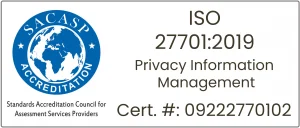Cross-border payments are the lifeline of global trade, enabling seamless exchange of money across borders. Cross-border transactions drive global investment flows, contributing to the prosperity of the global economy. The reliance on third-party providers (TPPs) has surged, as they are more efficient, cost-effective, and provide secure payment solutions compared to traditional banking methods, empowering businesses and individuals alike to navigate the complexities of cross-border payments with ease.
This blog explores the significance of TPP integration, delving into the myriad advantages it brings, and the challenges it entails. We will delve into the tangible benefits of TPP integration in cross-border payments, the key challenges and considerations involved in seamlessly integrating TPPs into existing systems, the regulatory framework and compliance issues that must be navigated, and the exciting future trends shaping TPP integration and the broader landscape of cross-border payments.
With insightful discussions and actionable insights, this blog aims to equip decision-makers with the knowledge and foresight necessary to harness the transformative power of TPPs and thrive in the ever-evolving global market.
Understanding the Cross-Border Payment Process
The integration of third-party providers (TPPs) is revolutionising this landscape by offering faster, more transparent, and cost-effective solutions. Through advanced technologies and seamless integrations, TPPs are streamlining the cross-border payment process, making it more efficient and reliable for businesses and consumers alike.
Cross-border payments involve transferring funds from a payer in one country to a recipient in another. This process typically entails multiple steps and the involvement of various financial institutions to navigate the complexities of different currencies, regulatory environments, and banking infrastructures
Here's a brief overview of how does cross-border payments work?
The objective of regulations like FATF Recommendations, Bank Secrecy Act (BSA), and EU AML Directive is to prevent money laundering and terrorist financing. Adherence to these regulations typically involves:
- Initiation: The payer initiates the transaction through their bank or payment service provider, providing the necessary details, including the recipient’s information, the amount to be transferred, and the currency in which the recipient will receive the funds.
- Intermediary Banks: Intermediary banks, also called correspondent banks, facilitate cross-border transfers when the payer and recipient banks lack a direct relationship. They bridge the gap between financial institutions, managing transfers across diverse banking networks and countries.
- Currency Conversion: If the transfer involves different currencies, the intermediary or recipient bank performs currency conversion. This step is critical as it determines the exchange rate and can affect the final amount received by the recipient.
- Clearing and Settlement: The payment goes through a clearing process, where transaction details are verified, and then settlement, where funds are transferred between the banks. This step often involves international payment networks such as SWIFT (Society for Worldwide Interbank Financial Telecommunication), which provide secure and standardised messaging systems to ensure the accurate transfer of funds.
- Regulatory Compliance: Throughout the process, all parties must comply with various regulatory requirements, such as anti-money laundering (AML) and know-your-customer (KYC) regulations, to prevent fraud and ensure the legitimacy of the transaction.
- Receipt of Funds: Finally, the recipient’s bank receives the funds and credits the recipient’s account. The time taken for the recipient to access the funds can vary depending on the banks involved and the efficiency of the intermediaries.
Decoding Partnerships and Integrations of TPP
Partnerships between banks and TPPs enable the seamless connection of disparate banking systems through Application Programming Interfaces (APIs). This enhanced interoperability ensures that different systems can communicate effectively, reducing friction in the payment process and enabling smoother, faster transaction flows.
TPPs streamline the entire transaction process by offering end-to-end solutions that handle everything from payment initiation to final settlement. This simplification reduces the need for multiple intermediaries, minimising delays and potential errors.
Leveraging Advanced Technologies used by TPP
The evolution of cross-border payments is propelled by third-party payment providers harnessing state-of-the-art technologies
- TPPs utilise blockchain technology to provide a transparent and immutable ledger for transactions, significantly reducing the risk of fraud and errors.
- Blockchain’s decentralised nature ensures that all parties have a single source of truth, enhancing trust and security.
- Artificial Intelligence and Machine Learning algorithms are employed to enhance fraud detection, automate compliance checks, and optimise transaction routing.
- These technologies enable real-time analysis of transaction data, identifying suspicious activities and ensuring swift and accurate adherence to regulatory requirements.
Integrating Various Services with TPP
- Real-Time Currency Exchange: TPPs provide real-time currency exchange services, offering integrated conversion with live exchange rates. This minimises costs related to currency fluctuations, ensuring recipients receive optimal rates, enhancing the affordability of cross-border payments.
- Fraud Detection and Compliance: By integrating advanced fraud detection systems and automated compliance checks, TPPs mitigate risks and ensure transactions comply with international and local regulations. This reduces the likelihood of fraudulent activities and non-compliance penalties.
- Multi-Currency Accounts: Some TPPs provide multi-currency accounts that allow businesses and individuals to hold, pay, and receive funds in multiple currencies. This feature simplifies managing international transactions and reduces the need for frequent currency conversions.
Risks in Cross-Border Payments and the Role of Partners
Cross-border Payments are fraught with inherent risks that can significantly affect transaction security, speed, and reliability. Identifying and understanding these risks is essential for effective management and mitigation. TPPs, including data analytics and CRM partners, play a crucial role in addressing these challenges through their expertise and advanced infrastructure.
Identification of Risks in International Money Transfer
- Currency Exchange Risk: Fluctuations in exchange rates can lead to unexpected costs and losses, making accurate forecasting and budgeting challenging for businesses.
- Regulatory Compliance Risk: Navigating the diverse regulatory landscapes of different countries, which have varying financial transaction regulations, anti-money laundering (AML), and know-your-customer (KYC) requirements, can be complex and time-consuming.
- Fraud and Security Risks: Cross-border transactions are more vulnerable to fraud, cyber-attacks, and data breaches due to their complexity and multiple points of interaction. The involvement of numerous intermediaries increases the risk of fraudulent activities.
- Operational Risk: Delays and errors can occur due to differences in banking systems, time zones, and processing times between countries. These operational risks can disrupt business operations and damage customer relationships.
Impact of Absent Partners on Transaction Security, Speed, and Reliability
- Increased Vulnerability: Without reliable partners, transactions are more susceptible to security breaches and fraud, as the absence of robust security measures can expose sensitive financial information to cybercriminals.
- Slower Processing Times: The lack of efficient intermediaries can lead to longer processing times, causing delays in fund transfers that can affect cash flow and business operations.
- Higher Costs: The absence of TPPs can result in a lack of access to competitive exchange rates and higher transaction fees, increasing the overall cost of cross-border payments.
- Reduced Reliability: Transactions may be less reliable, with higher chances of errors and failures, impacting customer trust and potentially leading to financial losses due to failed or delayed payments.
How Third-Party Partners Mitigate These Risks
Expertise in Regulatory Compliance
TPPs possess specialised knowledge and infrastructure to ensure adherence to international and local regulations, reducing compliance risks. They automate compliance checks and streamline processes to avoid delays and penalties.Advanced Security Measures
TPPs implement cutting-edge security technologies, such as end-to-end encryption, tokenisation, and multi-factor authentication, to protect transactions from cyber threats. They also use AI and machine learning algorithms to detect and prevent fraudulent activities in real-time.Efficient Currency Exchange
TPPs offer real-time currency conversion services with competitive exchange rates, reducing the risk of adverse currency fluctuations. Their large transaction volumes often allow them to offer better rates than traditional banks.Operational Efficiency
Leveraging advanced technologies and streamlined processes, TPPs ensure faster and more reliable transactions. Their robust infrastructure minimises errors and delays, improving overall efficiency and reliability.Integrated Solutions
TPPs provide integrated solutions that combine payment processing, currency exchange, fraud detection, and compliance checks. This holistic approach reduces the reliance on multiple intermediaries and minimises potential points of failure.
Excellence in Operational Efficiency
- Data and Analytics: Data analytics partners are essential for businesses, enabling trend identification, future predictions, and informed decision-making. These partners utilise advanced tools to track payment flows, reduce discrepancies, enhance financial planning, and streamline operations effectively.
- CRM and Payment Reconciliation: CRM partners assist in maintaining accurate records of transactions, customer interactions, and payment histories, ensuring seamless payment reconciliation. This integration enables better tracking, enhanced customer service, and efficient handling of payment-related issues.
- Forecasting and Planning: Data-driven insights enable businesses to forecast cash flow needs, manage liquidity, and plan for future transactions. By leveraging data analytics, companies can optimise their cross-border payment strategies, reduce costs, and improve overall financial health.
Integration Requirements at Each Stage
Cross-border payments involve multiple stages, each requiring specific integration to ensure efficient processing. Key partners such as payment gateways, banks, currency exchanges, regulatory compliance providers, and payment monitoring systems play critical roles in facilitating seamless transactions.
Here’s a detailed look at the stages and the integration requirements at each:
Integration Needs at Each Stage for Efficient Processing
The process of integration goes through four important phases, Initiation, Authorisation, Clearing, and Settlement.
Initiation
Initiation begins when the payer provides transaction details like recipient information, payment amount, and currency. Integration with payment gateways is pivotal for securely capturing payment details and initiating the transaction. Seamless integration with user interfaces such as websites and apps ensures a smooth user experience and precise data capture. APIs play a crucial role in facilitating communication between the payer’s system and the payment gateway, ensuring accurate and secure data transfers.Authorisation
The payer’s bank verifies transaction details and fund availability, ensuring compliance with regulations and anti-fraud measures. Integration with banking systems verifies account details and fund availability, while real-time integration with fraud detection systems identifies and prevents fraudulent transactions. Integration with compliance providers ensures adherence to local and international regulations, including AML and KYC requirements. Continuous payment monitoring systems track transaction activity in real-time, detecting unusual patterns and potential fraud to maintain transaction integrity.Clearing
During clearing, intermediary banks and payment networks facilitate transaction processing, including currency conversion if needed, and verifying transaction accuracy. Integration with currency exchange platforms allows for real-time currency conversion at competitive rates. Seamless integration with intermediary banks facilitates fund transfer across diverse banking networks. Connecting to clearing networks like SWIFT ensures secure and efficient processing of transaction data.Settlement
The recipient’s bank receives and credits the funds, finalising the transaction. Integration with recipient banks ensures the smooth transfer of funds and account crediting. Integration with reconciliation systems helps match transaction records and resolve discrepancies. Automated notification systems inform both the payer and recipient of transaction status, enhancing transparency. Continuous monitoring during settlement ensures accuracy and security, providing an additional layer of oversight.
Significance of Partners
- Payment Gateways: They provide the initial interface for transaction initiation and ensure secure data capture and transfer.
- Banks: Essential for verifying, authorising, and processing transactions. Banks also provide the final settlement of funds.
- Currency Exchanges: These platforms ensure efficient and cost-effective currency conversion, reducing the impact of exchange rate fluctuations.
- Regulatory Compliance Providers: They ensure that all transactions comply with relevant regulations, mitigating the risk of legal issues and penalties.
- Payment Monitoring Systems: These systems provide real-time oversight of transaction flows, helping to detect and prevent fraud, ensuring compliance, and enhancing overall security.
Explanation of Integrations and Major Players
Third-party integrations are crucial for businesses to manage different aspects of international money transfers efficiently.
Here’s a detailed look at some of the major players and their roles:
Payment Service Providers (PSPs)
They offer businesses a suite of services to process electronic payments and act as intermediaries between merchants and financial institutions, facilitating transactions through credit cards, bank transfers, e-wallets, and other payment methods. PayPal, Stripe, and Square are some of the service providers offering businesses a wide range of payment options.
KYC Providers
The role of KYC providers is to identify users and ensure compliance with regulatory requirements, including identity verification (IDV), liveness checks, and document authentication. Combining advanced techniques like AI and ML enhances the accuracy and efficiency of the verification process, which also helps prevent fraud, money laundering, and other illicit activities.
Currency Exchanges
Companies like Wise (formerly TransferWise) and OFX enable businesses and individuals to convert money from one currency to another at competitive rates. These services arreducedial for cross-border payments as they help manage exchange rate fluctuations and reduce costs associated with currency conversion. Currency exchanges typically offer transparent fee structures and real-time exchange rates, making international transactions more affordable and predictable.
Regulatory Compliance Providers
Regulatory compliance providers ensure that businesses adhere to the various laws and regulations governing financial transactions across different jurisdictions. Companies like ComplyAdvantage and IdentityMind specialise in Anti-Money Laundering (AML) and Counter-Terrorism Financing (CTF) compliance. They offer services such as transaction monitoring, risk assessment, and regulatory reporting. These providers use sophisticated algorithms and databases to detect suspicious activities and ensure compliance with global and local regulations.
Other Key Integrations
In addition to the primary players, several other integrations are crucial for optimising cross-border payment processes, such as
- Payment Gateways: Facilitate the processing of online transactions by securely transmitting payment information between the merchant, acquirer, and issuer.
- Payouts: Enable businesses to distribute funds to multiple recipients involving vendors, or customers, in various currencies.
- Foreign Exchange (FX): They offer competitive exchange rates and hedging options to manage currency risk.
- AML/KYC Solutions: Providing essential services such as identity verification (IDV) and liveness checks.
- SMS:SMS services for transaction alerts, and two-factor authentication have become an integral part.
- E-wallets: Digital wallets that store users’ payment information and facilitate quick and secure transactions.
- Bill Payments: Enable businesses to offer bill payment options to customers, creating additional revenue streams.
- Transaction Fraud Monitoring: Monitor transactions in real-time to detect and prevent fraudulent activities.
- Data Analytics: They analyse transaction data to provide insights into customer behavior, market trends, and business performance.
- Customer Relationship Management (CRM): Systems that help businesses manage interactions with customers, streamline processes, and improve profitability.
Complexities in Handling Multiple Partners
Managing multiple partners in cross-border payments introduces several complexities that can impact efficiency and profitability. Businesses must navigate various challenges, including integration costs, operational hurdles, and regulatory compliance, to ensure seamless payment processes.
- Integration Costs: High expenses associated with integrating diverse systems and technologies from multiple partners.
- Operational Challenges: Increased complexity in managing and coordinating various partners’ operations and workflows.
- High Cost: High costs are determined by transaction volume, resulting in increased fees for low value cross border payments.
- Delayed Go-to-Market: Extended timelines for launching new services due to the complexity of integrating multiple systems and partners.
- Compliance Management: Ensuring all partners comply with various regulatory requirements across different regions.
- Data Security and Privacy: Safeguarding customer data across multiple platforms increases the risk of breaches and requires strong security measures.
- Technical Compatibility: Integrating different systems can lead to compatibility issues, necessitating customisation and ongoing maintenance.
- Service Reliability: Dependence on multiple partners means that any service disruption from one can impact the entire payment process.
- Quality Control: Maintaining consistent service quality is challenging when different partners have varying standards and protocols.
- Communication Barriers: Differences in language, time zones, and business practices complicate coordination among international partners.
- Customer Experience: Ensuring a seamless and consistent customer experience is difficult with multiple partners handling different parts of the process.
Wrapping up
Thrid Party Providers (TPPs) play a crucial role in streamlining cross-border payments, offering a comprehensive range of services from payment processing to regulatory compliance. Businesses must carefully select and manage their TPP partners to ensure smooth operations and regulatory compliance. Looking forward, future advancements in cross-border payment integrations are expected to prioritize improved security, seamless user experiences, and global expansion.
Netremit, an innovative cross-border platform offered by Macro Global, provides significant benefits to organisations involved in payments. With its ability to seamlessly integrate with various third-party services, Netremit offers a unique and efficient solution. Our partnership with several institutions has enabled them to scale, grow, and streamline their business processes. We have built a reputation for reliability, becoming their preferred destination for several digital products and services.
By partnering with us, businesses can offload the heavy lifting and gain peace of mind, allowing them to focus on core business activities and explore new opportunities. To explore partnership opportunities with Netremit, please contact us at +44 (0)204 574 2433 or email us at salesdesk@MacroGlobal.co.uk. Our dedicated executives will work closely with you to understand your requirements and tailor our services to meet your needs.
Ready to get started?
We can’t wait to show you what’s possible with NetRemit.
Related Posts
Revolutionising Remittance: How NetRemit’s Promotion Management Drives Loyalty and Growth
NetRemit empowers remittance businesses to boost growth and build lasting customer loyalty through seamless promotion management. Know how!
How Smaller Money Transfer Operators Can Thrive in International Remittance Landscape
Explore smart strategies and tech-driven solutions for small MTOs to establish leadership and dominate the competitive international remittance market.
Powering the Gig Economy with Instant Cross-Border Payments
See why instant cross-border payments are essential for the gig economy, eliminating delays, high fees, and inefficiencies while boosting global workforce efficiency.

















